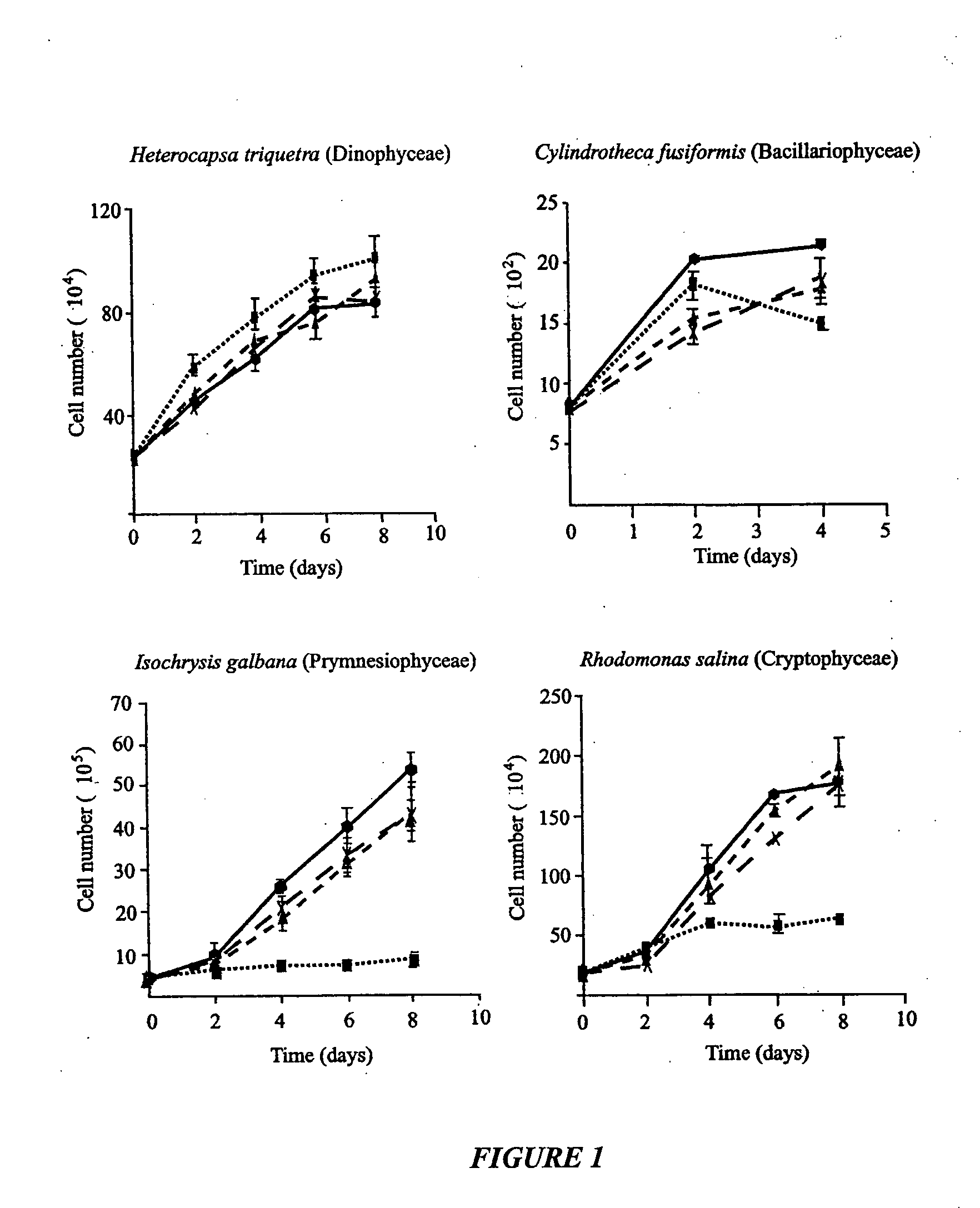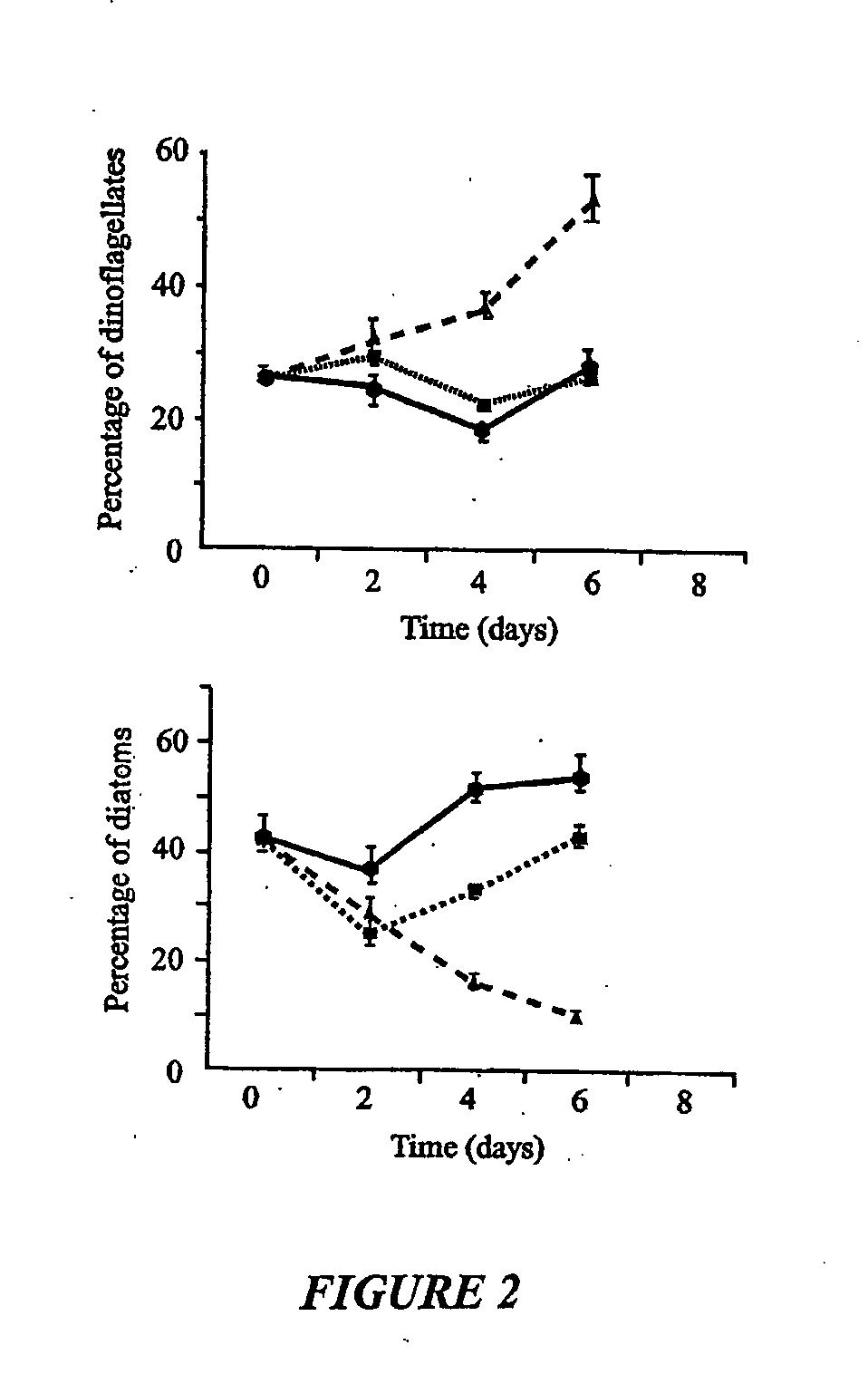Method for the production of dinoflagellate cultures
a technology of dinoflagellate and culture, which is applied in the direction of biocide, microorganisms, biochemistry apparatus and processes, etc., can solve the problem of significantly faster method, and achieve the effect of improving the growth rate and purity
- Summary
- Abstract
- Description
- Claims
- Application Information
AI Technical Summary
Benefits of technology
Problems solved by technology
Method used
Image
Examples
example 1
The Effects of Mimosine on Cell Proliferation of Monocultures of Major Phytoplankton Groups
[0034] The effects of mimosine at low mM concentrations on pure cultures of four different groups of phytoplankton were tested. The phytoplankton tested were the Cryptophyceae Rhodomonas salina (CCMP1319), the Prymnesiophyceae Isochrysis galbana (CCMP1323), the Bacillariophyceae Cylindricus fusiformis (PCC100) and the dinoflagellate Heterocapsa triquetra (CCMP449). Cultures of phytoplankters were obtained from Bigelow Laboratory for Ocean Sciences (CCMP) or the Plymouth Culture Collection (PCC). The cultures were maintained in f / 2 medium at 18° C., under photon flux of 50 mol·m−2s−1 from fluorescent tubes (Phillips daylight) under a 14:10 hours light / dark cycle. For cell proliferation assays, exponentially growing cells were diluted ten times with fresh medium before the addition of mimosine to give cultures having a final mimosine concentration of 0.01, 0.1 and 1 mM. All chemicals were from ...
example 2
The Effects of Mimosine on Mixed Phytoplankton in Natural Seawater Samples
[0036] The differential effects of mimosine on monocultures of phytoplankton groups suggests that it may have selective effects in mixed populations. Whether mimosine can confer an advantage in the phytoplankton community by adding mimosine directly to natural seawater samples was therefore tested. Natural seawater samples were collected from Port Shelter (eastern Hong Kong) and filtered through a 100 μm mesh to remove all zooplankton immediately before use. Mimosine was then added at 2 mM and samples were taken for estimation of the percentage of dinoflagellates and diatoms. The samples were then incubated under the same conditions as in Example 1. Within 6 days, dinoflagellates became the dominant group. The dinoflagellate population increased from 30% to 60% of the total population (FIG. 2). The diatoms, which were the dominant group in the control, decreased to 10% of the total population in 6 days (at th...
PUM
| Property | Measurement | Unit |
|---|---|---|
| time | aaaaa | aaaaa |
| time | aaaaa | aaaaa |
| concentration | aaaaa | aaaaa |
Abstract
Description
Claims
Application Information
 Login to View More
Login to View More - R&D
- Intellectual Property
- Life Sciences
- Materials
- Tech Scout
- Unparalleled Data Quality
- Higher Quality Content
- 60% Fewer Hallucinations
Browse by: Latest US Patents, China's latest patents, Technical Efficacy Thesaurus, Application Domain, Technology Topic, Popular Technical Reports.
© 2025 PatSnap. All rights reserved.Legal|Privacy policy|Modern Slavery Act Transparency Statement|Sitemap|About US| Contact US: help@patsnap.com


